This architectural gem in South Africa’s Cape winelands, designed by Mies van der Rohe protégé Pius Pahl, has been subtly and sensitively renovated by owners Dicey and Thom du Toit, unlocking its almost Zen-like serenity and intimate connection with its natural surrounds.
While architect Pius Pahl’s philosophy and aesthetic is undoubtedly after the International Style, in keeping with his Bauhaus education, the fireplace is an example of the way he reinterpreted aspect of Cape Dutch vernacular, as are the whitewashed walls. The steel artwork on the wall adjacent to the fireplace is by landscape artist and sculptor Strydom van der Merwe. It is composed of symbols taken from the Ogham alphabet representing the elements surrounding the house. It is an amalgam of the similar pieces at the front entrance. The watercolour on the cabinet is a documentation drawing for the artwork HAIKU by Strydom van der Merwe and the blue lamp is by Adriaan Hugo of Dokter and Misses. The front door and floating art divider cupboard were designed by architect Servaas de Kock. He designed them according to the geometry and proportions that Pahl had used throughout the rest of the house.
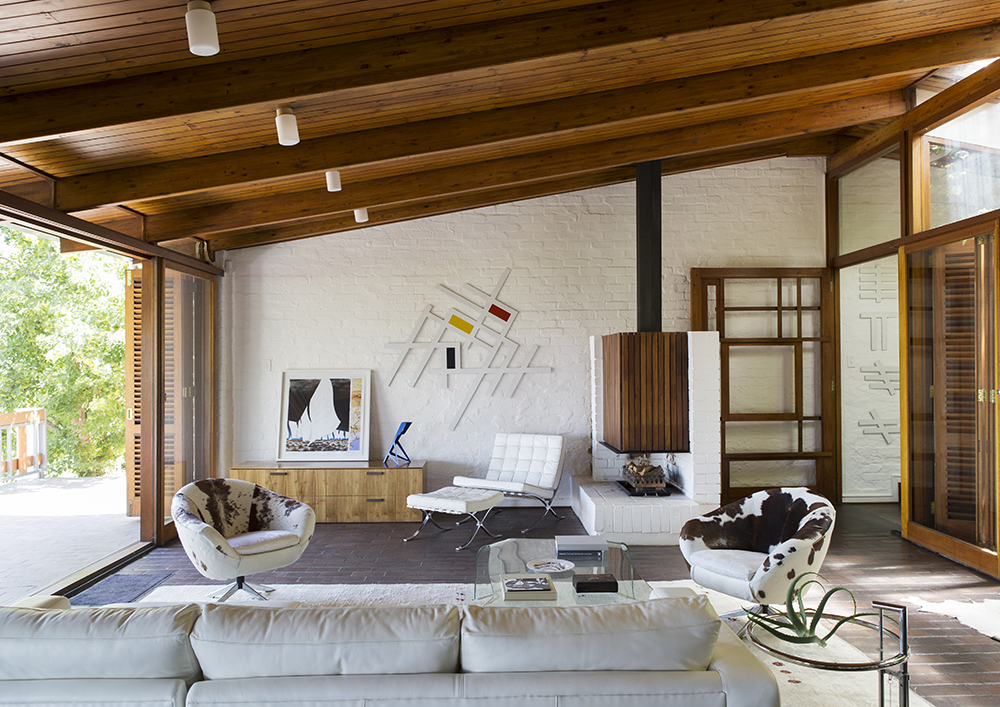
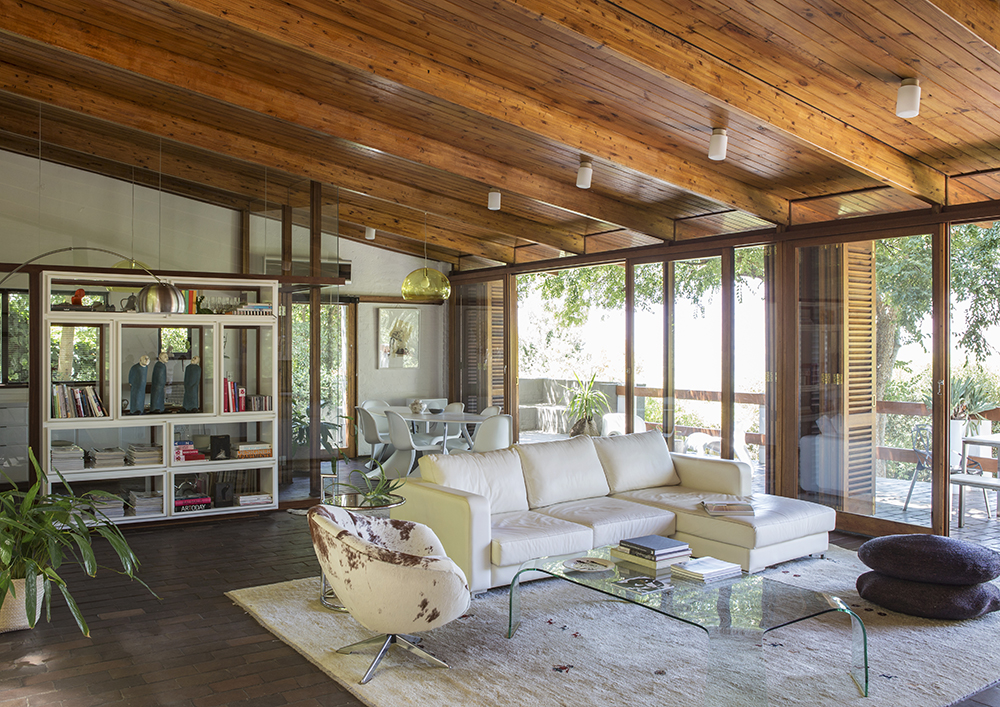
The wide open lounge area leads onto the terrace. Its wall of glass overlooks views of the Drakenstein mountains. The sitting area is filled with design classics, such as an Eileen Gray side table, an arc lamp, a Barcelona chair, designed by architect Pius Pahls Bauhaus mentor Mies van der Rohe, the first piece of midcentury designer furniture Dicey and Thom bought. The bucket chairs have been reupholstered in Nguni hide. They were a gift from Dicey’s father to her mother when she was born in 1967.
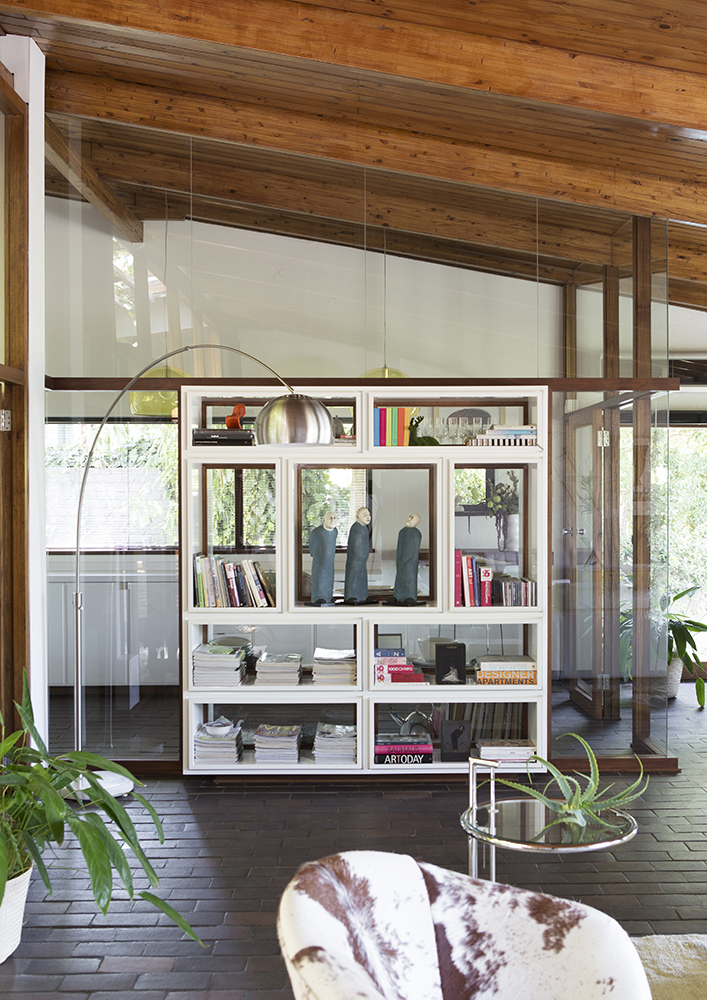
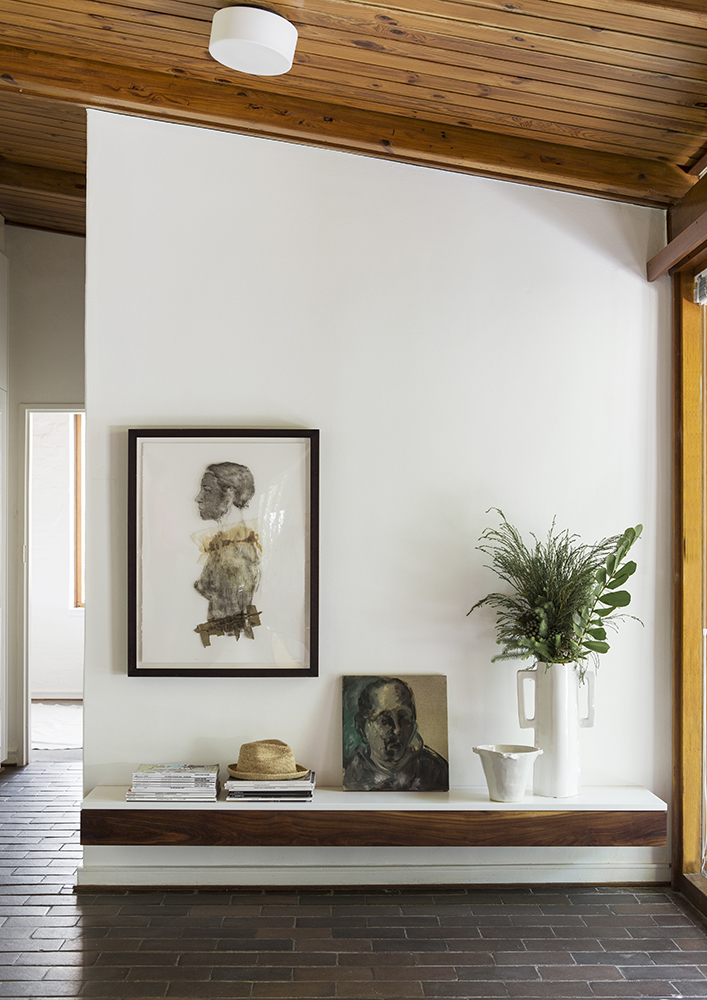
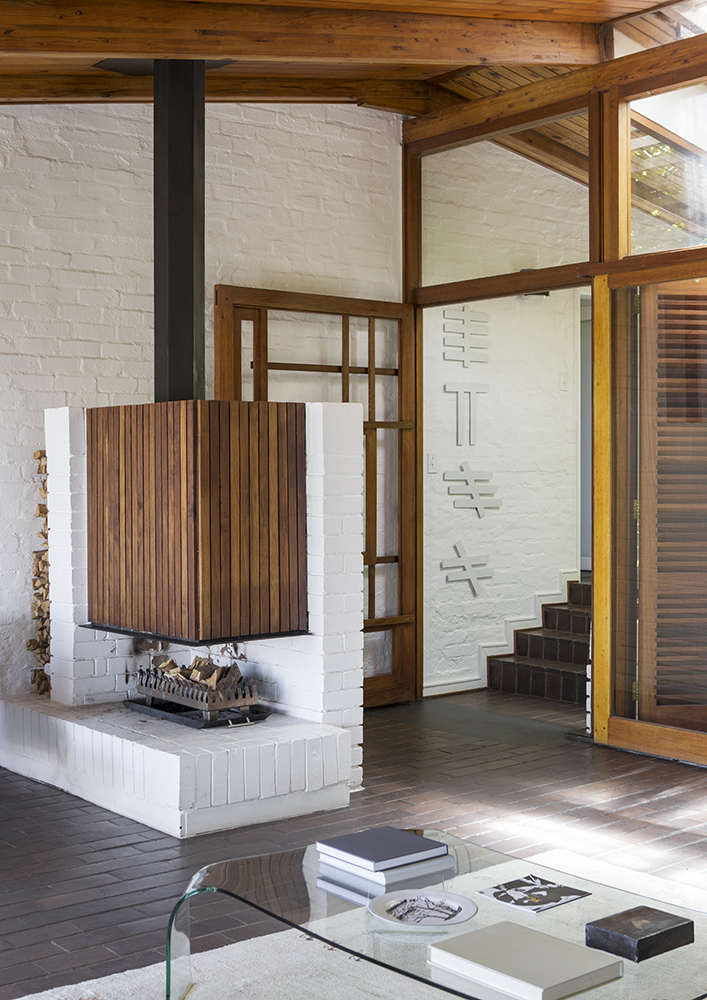
Downstairs, the bedrooms lead off what was once a playroom. The Le Corbusier lounger was a gift from Thom for Dicey’s 40th birthday and the Noguchi coffee table is a nod to the Zen-like lightness of the house. The rug is a pure wool Turkish Gabbeh. The pendant lamp was imported by Pahl, and used to hang in the dining room. Thom had it written into the sale contract that it was to be included with the house. The painting on the floating shelf are by Shany van der Berg (shanyvandenberg.com). The white glossy cabinets leading into the bedrooms are new, but were built according to Pahl’s original design.
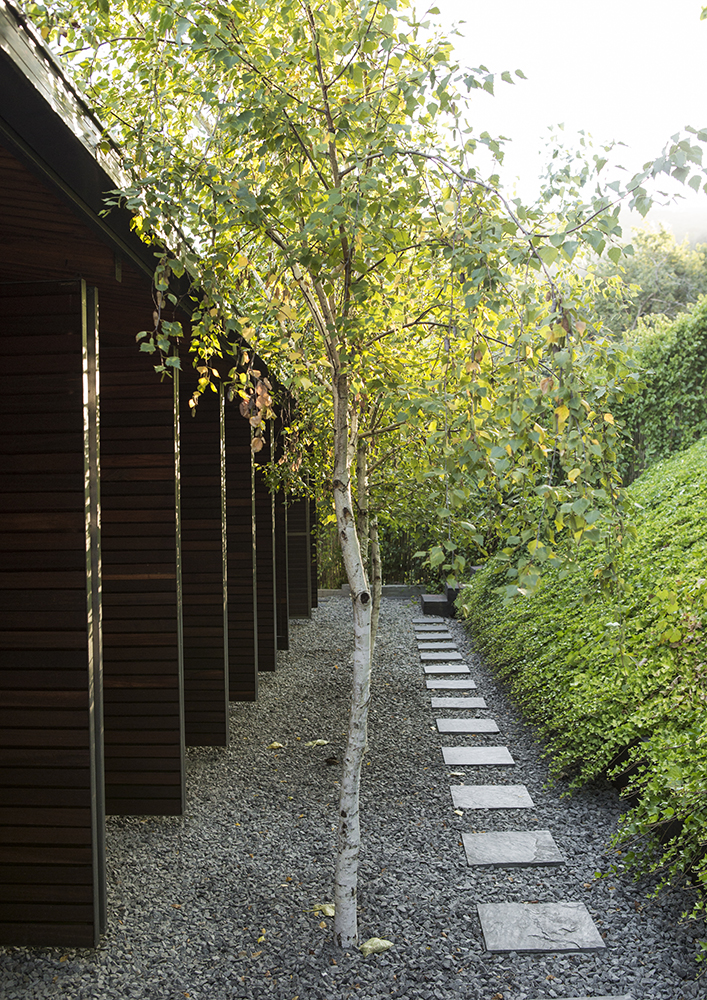
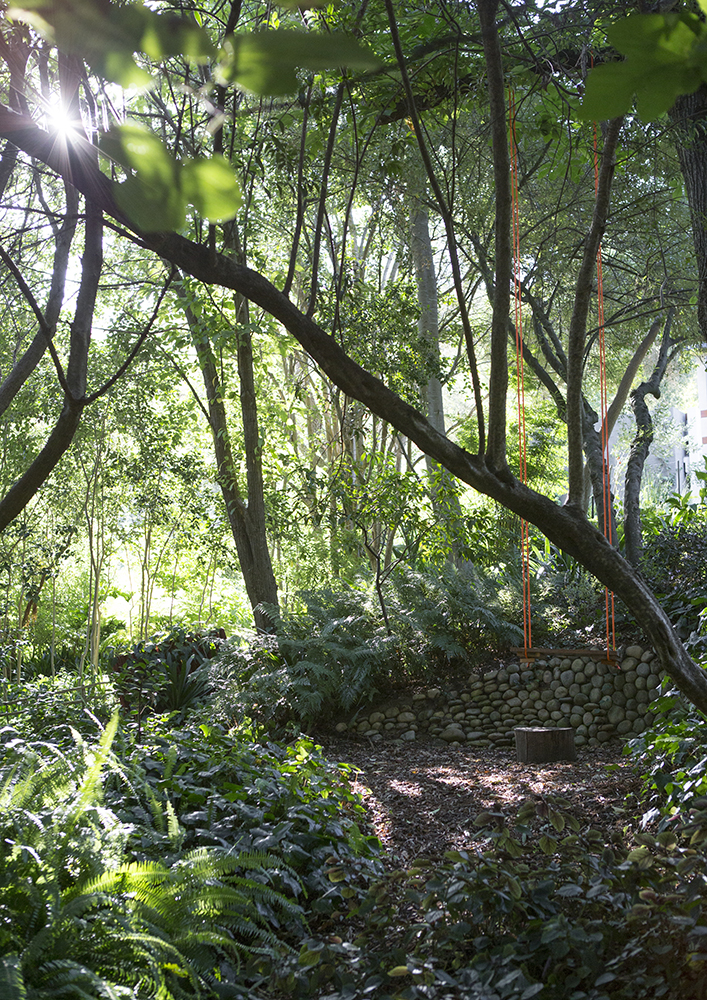
Pius Pahl’s modernist aesthetic is evident in the clean lines and geometry of the architecture, but the house is unobtrusive in the beautiful natural setting.
Many of the trees were planted when the house was built. Architect Pius Pahl had a holistic approach to design, including aspects of the landscaping. The trees help to create shade and shelter. The site slopes steeply and Dicey has included terraces and stairs to make it more navigable. She has also replaced some of the old plants, but has not significantly altered the design of the garden.






